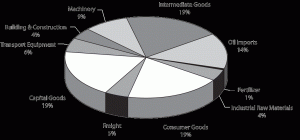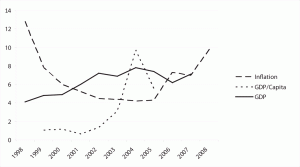by Joseph Kilasara
It is stimulus time. Finance ministers in the developed world are reaching for their red boxes trying to tighten or loosen some economic bolts and nuts in order to stimulate their faltering economies.
Reacting to the fallout from the credit crunch, President Kikwete pleaded with them not to touch the aid nut or perhaps try to loosen it a bit further. He went on to point out how our economy could be affected by the fall in future aid pledges, tourism related revenues, fall in demand of exports, increased borrowing costs of foreign loans as well as fall in foreign direct investments as capital markets in the developed world keep turning south.
For his part Governor Ndulu of the Tanzania Central Bank (BoT) assured the nation that the financial stability of the banking system is sound as demonstrated by an increase in private credit lending of up to 48% by September 2008. The banks are also not exposed to the secondary debt market championed in the northern world which has all but dried up and are said to be well capitalised to meet their maturing obligations. With a foreign exchange reserve of about $2.7bn, which is equivalent to about 5 months worth of importation, $1.6bn foreign currency deposits of Tanzania residents and $600m in commercial bank net foreign assets the BoT forecasts that going forward the economy is well cushioned against the potential fallout from the crisis and its ensuing recession.
Despite the Governor’s bold assurance and his immediate follow-up warning to banks against currency speculation, one could sympathize with the banks for making a quantitative interpretation of some of his statements such as: “The robustness of the foreign reserves is important for the stability of the Tanzania Shilling and confidence in the economy” and cause the US dollar to rise against the Shilling from 1,160 to 1,310 in four weeks. Blaming this fall on speculation is much the same as when naked short-sellers were blamed for the falling share price of the UK bank HBOS when its capital was actually inadequate.
Financing of the current account deficit which jumped by 49.1% in 2007 to $2,056.2m equivalent to about 17% of GDP is also a major cause of concern. At this rate of increase the reserve cushion looks very flat. Looking at BoT figures for the year up to August 2008, the structure of imports, where 38% comprise consumer goods and intermediate goods excluding oil means despite being endowed with an abundant level of resources and generous donors we are still borrowing substantially to pay for our daily consumption (see chart).

Breakdown of Imports into Tanzania by value
With external debt still standing at $5.8bn, 23.3% of which is interest arrears, it is clear that, despite the level of debt relief and debt payments, since we are not servicing the interest fully the debt will continue to grow. Tony Blair was elected with one main objective “Education, Education, Education.” Perhaps we need to declare “Productivity, Productivity, Productivity” as our objective number one. With a country as big as ours and a population increasing by about a million a year the majority of whom are young, a GDP of $13bn growing at about 6- 7%, poverty will be a culture instead of being a challenge.
One of the positive outcomes from the credit crunch is the fall in demand for oil which has driven the price down by more than 50% of its July 2008 level. This will help in reducing the import bill as well as the inflation rate though the rising value of the dollar is likely to offset some of the benefit. Falling commodity prices and the potential fall in future aid pledges as donors’ hands becomes tied in paying off the profligacy of their stimulus package are other factors to consider.
On the other hand the low price of oil is likely to reduce importing countries’ appetite to diversify their energy uses as well as investing in energy efficiency while also acting as a disincentive to producing countries from investing in production facilities. When economies in the north start to turn around, hence boosting the demand for oil, the International Energy Agency is projecting an oil price of over $200 a barrel. This will not only pose an economic risk but also a security risk as it may comprise over a third of the import bill.
The primary objective of the BoT is deliberately defined in short as, “To maintain price stability”, and with that in mind they have declared that, “Inflation is the nation’s economic enemy number one”, without defining an acceptable inflation rate or at least having some sort of a targeted psychological rate of say 5% which may seem to be a reasonable rate.
In the UK, the Bank of England has to explain publicly when inflation diverts by over 1% from the targeted rate of 2%. With inflation rising from the low of 4.5% in 2002 to 9.8% in August 2008 not only is their a need for markets to have a clear idea of BoT intentions to avoid unnecessary volatility but a high inflation rate also dilutes the benefits of the economic growth (see chart). By merely declaring Inflation as enemy number one, may indicate that deflation is therefore a friend which is further from the truth.


Pingback: Tanzanian Affairs » THE CREDIT CRUNCH & TANZANIA : The US Credit Crunch